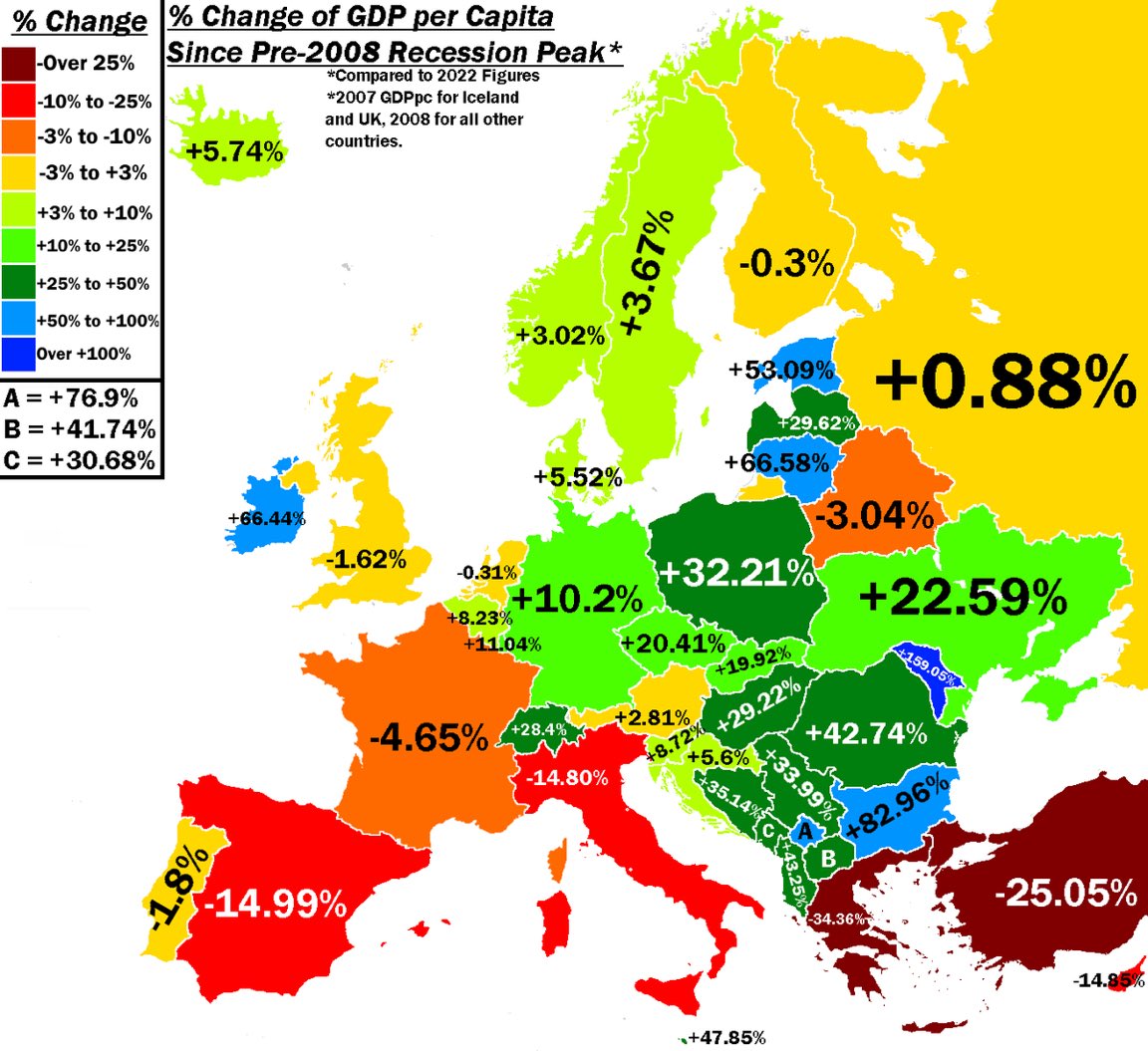Populism has expressed itself in many different forms across Europe, but there is one factor that comes close to explaining it at a macro-scale.
The above map, tweeted out by the economist Daniel Lacalle, shows the change in GDP per head in each country since the pre-2008 recession peak — i.e. before the chaos caused by Global Financial Crisis.
There are various issues with comparing GDP between different countries (not to mention different points in time), but the key point here is the broad geographical pattern.
Looking at Western Europe first, the story is one of stagnation in most of the big economies — with Germany as the main exception. Germany also happens to be a country where populism has had comparatively little impact. The main populist party, the AfD, has been frozen out of national and regional government and its electoral strongholds are limited to the former East Germany. Contrast that to the British experience, where the populist surge took the history-changing form of Brexit. As for France, populist parties of Left and Right now completely dominate the opposition to Emmanuel Macron.
Turning to Southern Europe, we see that the economies of Spain, Italy and Greece have suffered badly over the last decade. These countries were hammered by the Eurozone crisis and have yet to fully recover. One might expect this to provide fertile ground for a political backlash — and that is exactly what has happened. In Greece, the populist Left has already formed one government (eventually crushed by the might of the European Central Bank). In Italy, the largest party of the populist Right is hitting new highs in support — and its leader, Giorgia Meloni, is in pole position to become the country’s first female Prime Minister. Meanwhile in Spain, the taboos of the post-Franco era are breaking down. The hard Right Vox party is currently on course to gain a share of national power as a coalition partner to the more moderate Partido Popular.
The economic picture looks very different in the former communist countries of central and Eastern Europe. The likes of Poland and Hungary have grown rapidly — though from a much lower base than the much richer countries of Western Europe. Populism has also taken a different form in the east. Rather than being an expression of protest, it is about parties of government distributing the proceeds of growth to their supporters while asserting national identity against real or imagined external threats.
To be clear, I’m not arguing that economics is the sole determinant of Europe’s politics. Nevertheless, a comparison of the different parts of the continent does show that money matters. Populism won’t go away until all of Europe is rich, all of Europe is growing and all Europeans feel included.











Join the discussion
Join like minded readers that support our journalism by becoming a paid subscriber
To join the discussion in the comments, become a paid subscriber.
Join like minded readers that support our journalism, read unlimited articles and enjoy other subscriber-only benefits.
Subscribe